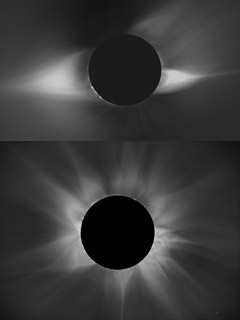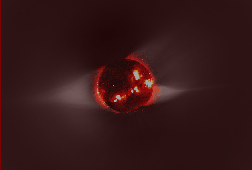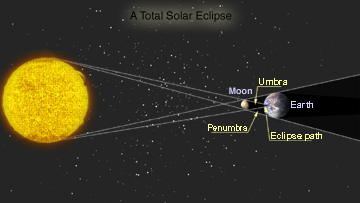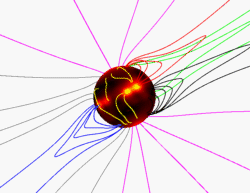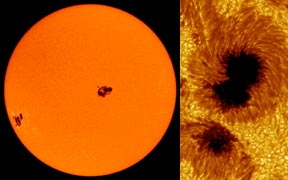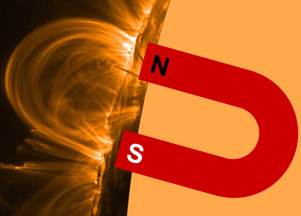Click on image for full size
Images courtesy of UCAR's High Altitude Observatory and Rhodes College.
The Solar Polar Atmosphere
At certain times in the sunspot cycle, the Sun's atmosphere and the solar wind behave very differently near the Sun's poles as compared to equatorial regions on the Sun.
Scientists call the relatively "quiet" phase of each sunspot cycle "solar min". Around solar min, images of the Sun's upper atmosphere (the corona) show striking differences between the polar corona and the equatorial corona. Images taken during a solar eclipse or by a special instrument called a coronagraph show dense structures called streamers extending outward through the corona at low latitudes. However, near the Sun's poles the streamers are less prominent or absent altogether.
The solar wind, the Sun's "extended atmosphere", also displays distinct polar and equatorial regimes around each solar min. The solar wind emanating from polar regions races away from the Sun at speeds of 700 km/sec (435 miles/second) or faster. The solar wind flowing outward from equatorial regions is much slower, moving about half as quickly as the fast polar wind. The fast solar wind escapes the Sun through coronal holes which form around open magnetic field lines near the poles.
During the active phase of the solar cycle, called "solar max", the number of sunspots increases and the Sun's magnetic field becomes complex and chaotic. Eclipse photos and coronagraphs show streamers bursting forth in a haphazard fashion from all latitudes on the Sun at solar max. Likewise, the Sun's scrambled magnetic field at solar max produces many more fluctuations in solar wind speed with latitude... unlike the clear equatorial vs. polar distinction found at solar min.
Much of our knowledge of the Sun's poles and the high-latitude solar wind was gathered by the Ulysses spacecraft. Ulysses is the only mission so far to "fly over" the poles of the Sun.


